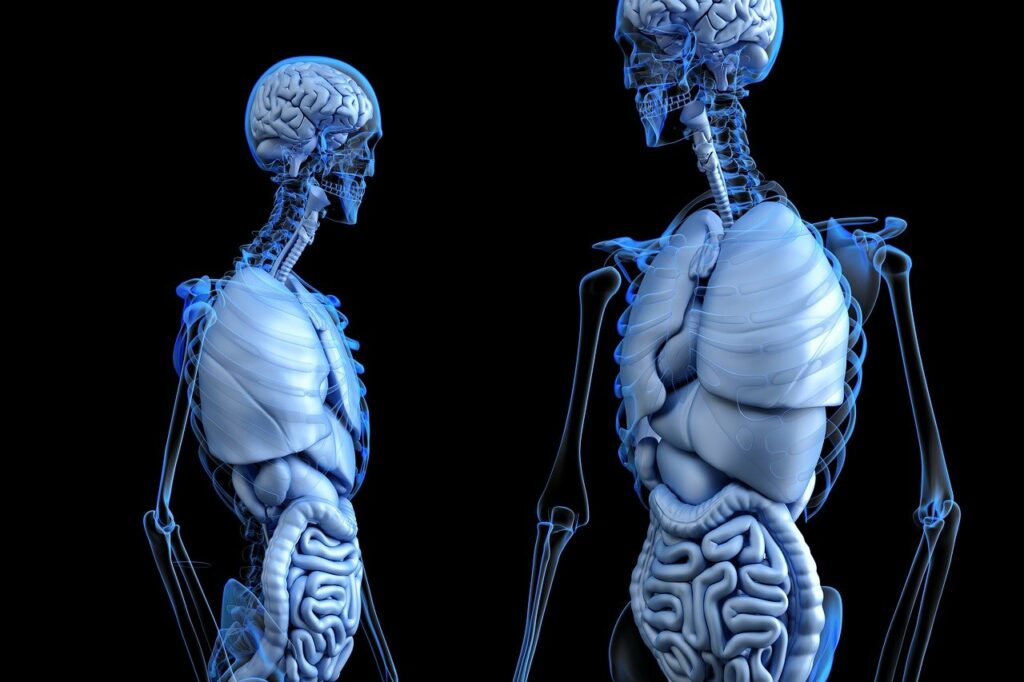Inflammation is a natural defence mechanism of the body, designed to protect us from harmful stimuli and promote healing. However, not all inflammation is the same. There are two main types: acute inflammation and chronic inflammation.
While acute inflammation is a normal and short-live response, chronic inflammation can be insidious and harmful, leading to various health issues. In this blog, we will explore the key differences between acute and chronic inflammation, why chronic inflammation is bad for our health, the risk factors associated with it, methods of diagnosis, and most importantly, how to prevent it.
Acute vs. Chronic Inflammation
Acute inflammation is the body’s rapid response to injuries, infections, or irritants. It typically lasts for a short period and is characterized by symptoms such as redness, swelling, heat, and pain. This response helps the body heal and fend off potential threats and is therefore seen as beneficial. Chronic inflammation, on the other hand, is a persistent and prolonged inflammatory state that occurs when the body’s immune system gets ‘stuck on’, resulting in a continuous release of pro- inflammatory chemicals. Unlike acute inflammation, chronic inflammation can go unnoticed for long periods, silently wreaking havoc on our health.
Why Chronic Inflammation is Bad
While acute inflammation is essential for healing, chronic inflammation can have detrimental effects on various organs and systems. Prolonged exposure to pro-inflammatory chemicals can damage healthy tissues, increase the risk of chronic diseases, and accelerate the aging process. In some cases, as with rheumatoid arthritis, chronic, low-grade inflammation occurs because of an auto- immune disease. This is where the body mistakenly identifies healthy tissues as threats, and erroneously releases pro-inflammatory chemicals. Other diseases, such as cardiovascular diseases, diabetes, Alzheimer’s, non alcoholic fatty liver disease, COPD and certain cancers have been linked to chronic inflammation.
Risk Factors for Chronic Inflammation
Several factors can contribute to the development of chronic inflammation:
Diet: A diet high in processed foods, refined sugars, and unhealthy fats can trigger inflammation.
Sedentary Lifestyle: Lack of regular physical activity can lead to chronic inflammation.
Obesity: Adipose tissue produces inflammatory chemicals, and excess fat can lead to chronic low-grade inflammation.
Smoking: Tobacco smoke contains harmful chemicals that promote inflammation.
Chronic Stress: Prolonged stress can disrupt the body’s immune response and lead to inflammation.
Environmental Toxins: Exposure to pollutants and toxins can trigger chronic inflammation. For example, living in a city centre with exhaust fumes will contribute to poor air quality.
Diagnosis of Chronic Inflammation
Diagnosing chronic inflammation can be challenging, as it often develops slowly without obvious symptoms. However, certain blood tests can indicate the presence of inflammation markers, such as C-reactive protein (CRP) and erythrocyte sedimentation rate (ESR). CRP is normally present at low levels in the body and is produced by the liver in response to inflammation, either acutely in response to an infection or injury, or chronically due to disease. Elevated CRP levels may be a sign that some systemic inflammation is present. Erythrocytes, or red blood cells, are typically relatively light. Therefore, in healthy individuals, they don’t settle to the bottom of a test tube very quickly. However, when individuals with chronic inflammation undergo an ESR test, chemical changes due to their inflammation can cause red blood cells to fall faster. Additionally, medical history, physical exams, and imaging tests may be used to identify inflammatory conditions.
Prevention of Chronic Inflammation
There are some lifestyle changes which can be made to prevent or minimise the effects of chronic, systemic, low-grade inflammation:
Adopt a Healthy Diet: Emphasize whole, nutrient-rich foods like fruits, vegetables, whole grains, and healthy fats. Minimize processed foods and excessive sugar and salt intake.
Regular Exercise: Engage in physical activity regularly. Exercise helps reduce inflammation and improve overall health. We should aim for 150 minutes of moderate intensity, or 75 minutes of vigorous intensity exercise each week. Adults should also perform muscle strengthening exercises on at least 2 separate days per week.
Maintain a Healthy Weight: Achieve and maintain a healthy weight through a balanced diet and exercise. A health professional will be able to help understand your specific requirements.
Manage Stress: Practice stress-reducing techniques like meditation, yoga, or deep breathing to lower stress levels. Taking the time to regularly perform these practices over time can lower the chances of developing chronic inflammation as a result of stress.
Avoid Smoking and Limit Alcohol: Quit smoking and limit alcohol consumption, as both can promote inflammation. In the UK, adhering to the alcohol consumption guidelines of fewer than 14 units of alcohol per week, spread across at least three days over the course of the week, will help to reduce inflammation levels.
Limit Exposure to Toxins: Be mindful of environmental toxins and take necessary precautions to minimize exposure.
Conclusion
Chronic inflammation may be silent, but its impact on our health can be profound. Understanding the difference between acute and chronic inflammation is crucial in recognizing the importance of prevention. By adopting a healthy lifestyle, managing risk factors, and staying vigilant about early detection, we can protect ourselves from the harmful consequences of chronic inflammation and lead healthier, happier lives.



